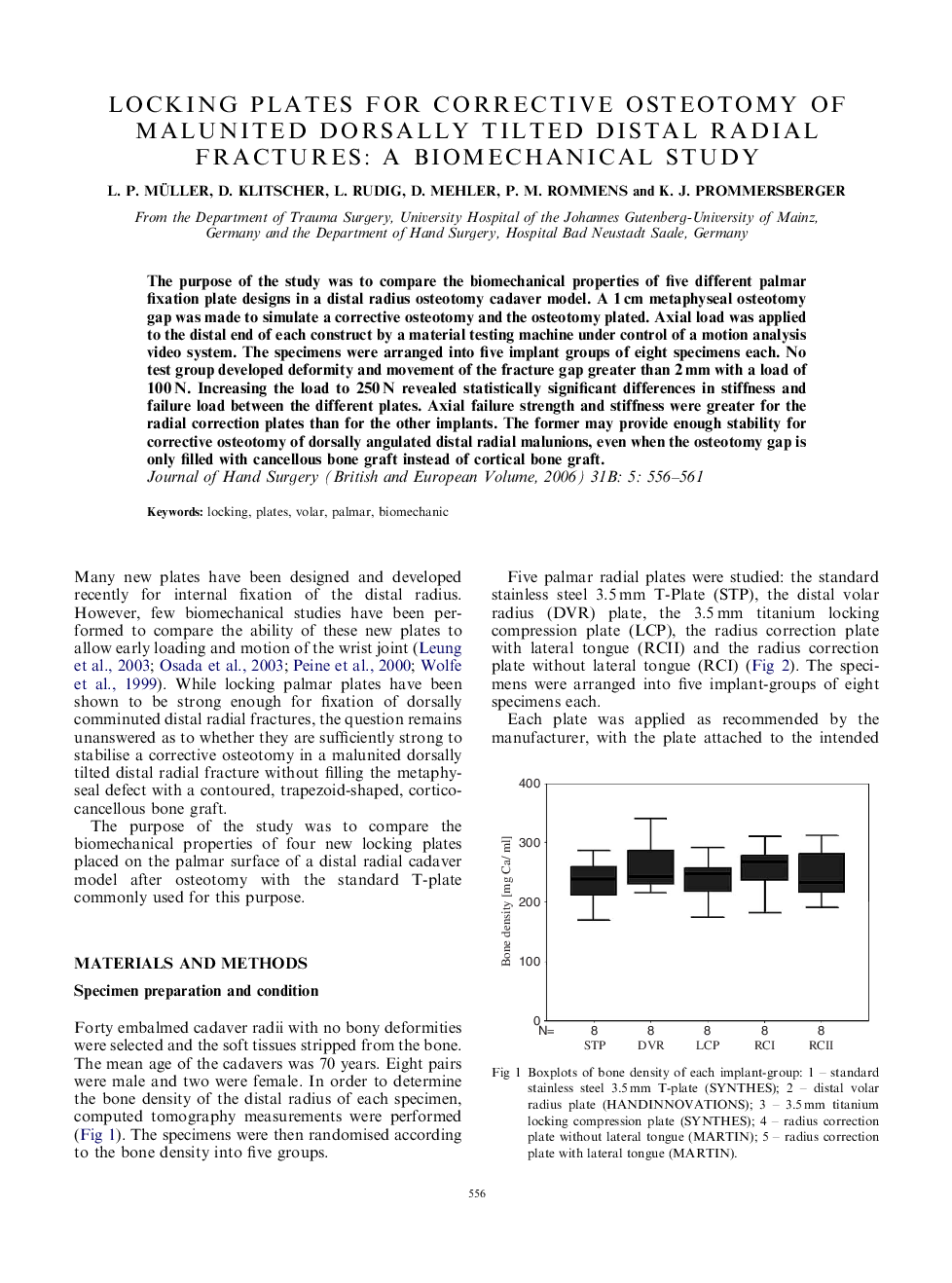| Article ID | Journal | Published Year | Pages | File Type |
|---|---|---|---|---|
| 4071919 | The Journal of Hand Surgery: British & European Volume | 2006 | 6 Pages |
Abstract
The purpose of the study was to compare the biomechanical properties of five different palmar fixation plate designs in a distal radius osteotomy cadaver model. A 1Â cm metaphyseal osteotomy gap was made to simulate a corrective osteotomy and the osteotomy plated. Axial load was applied to the distal end of each construct by a material testing machine under control of a motion analysis video system. The specimens were arranged into five implant groups of eight specimens each. No test group developed deformity and movement of the fracture gap greater than 2Â mm with a load of 100Â N. Increasing the load to 250Â N revealed statistically significant differences in stiffness and failure load between the different plates. Axial failure strength and stiffness were greater for the radial correction plates than for the other implants. The former may provide enough stability for corrective osteotomy of dorsally angulated distal radial malunions, even when the osteotomy gap is only filled with cancellous bone graft instead of cortical bone graft.
Keywords
Related Topics
Health Sciences
Medicine and Dentistry
Orthopedics, Sports Medicine and Rehabilitation
Authors
L.P. Müller, D. Klitscher, L. Rudig, D. Mehler, P.M. Rommens, K.J. Prommersberger,
